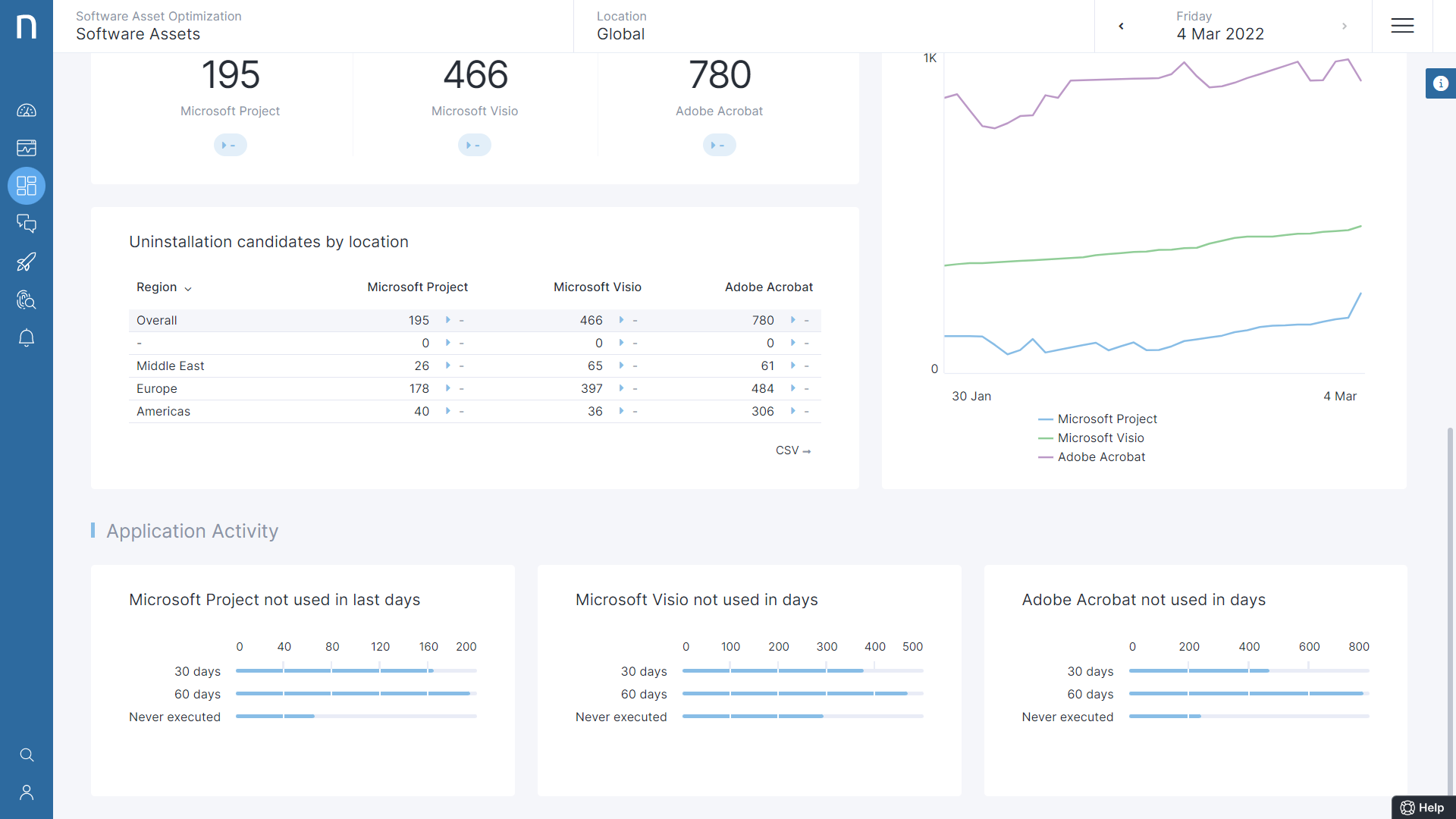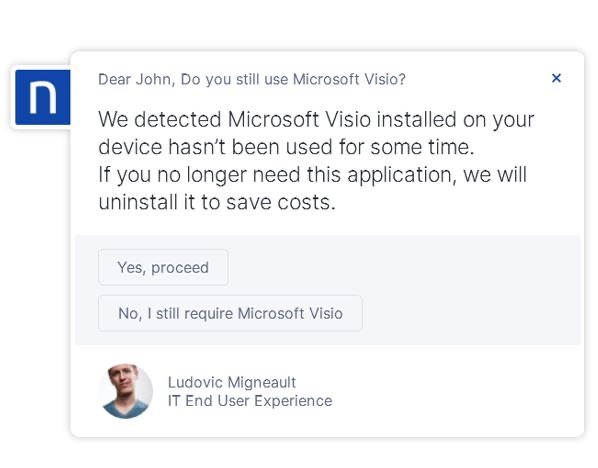Manage the continuous application shell game of constantly changing employee needs within large enterprises
It can be tricky for large organizations to track employee software licenses given the multitude of applications and activities that continuously take place across the business. On a given day, a typical organization with 10,000 employees using only a dozen applications still results in more than 100 thousand application interactions. Each of these employee experiences has the potential to create IT issues that IT needs to stay ahead of without going over budget.
Then consider application license ownership. Licenses can be owned by a range of stakeholders across the enterprise—from IT to Finance, product development to customer support, marketing to purchasing—and you can start to see why managing and optimizing software licenses to match actual employee needs and use is extremely difficult. Such a dispersed environment can be extremely difficult to track, let alone optimize or manage.
License quantities are clearly known at the time of purchase. However, as projects move through various stages of completion, license assignments fluctuate based on budget or employee needs.
And while there is always a normal ebb and flow of license requirements within organizations, the recent increase in employee onboarding and offboarding during the great resignation has significantly increased the pressure on IT to accurately track and manage software license costs while ensuring business continuity.
The massive issue: unused and potentially unneeded software licenses result in rising costs. Over time, these incremental expenses accumulate, leading to expensive licensing costs that bloat the budget.
To solve this problem, IT must find a way to optimize licensing costs, and create a more cost- efficient software license plan, without hurting productivity and the digital experience of employees.
Counting software licenses is not enough!
Counting licenses is an important starting point for license optimization but it comes with serious limitations. Manually tracking license counts across siloed IT teams and business owners gets messy – fast.
Plenty of organizations have software and asset management tools to help track license counts, but over time, employee needs and usage patterns change creating license information gaps.
What about vendor provided information? Sometimes SaaS license information is provided back to the business by application vendors. But this information is only accurate for a given point in time and is blind to constantly changing employee usage needs. As a result, relying on static license pools (that are incremented and decremented typically based on employee status changes) is not only inaccurate but also risky and potentially expensive. The massive issue: the ever-rising costs of unused and potentially unneeded software licenses. This results in unused packaged software lost on local drives and forgotten SaaS subscriptions burning money and creating compliance issues.
There is one critical piece of data missing from all three of these approaches to software license management: employee usage data. Only when IT teams incorporate usage data alongside license counts and cost analysis can they truly optimize license costs in a way that still drives business productivity and value.
To solve this problem, IT must simultaneously optimize licensing costs, improve the software digital experience for employees, and look beyond simple license counts to understand actual license usage.
Use Case: A Global Manufacturer Incorporates Usage Visibility Into Their Software License Optimization Plan
The IT team at a global manufacturer was struggling to manage the growing and constantly changing number of end-users and their associated applications in their complex global IT environment. Then management threw a wrench into their machine: reduce the software license budget by €50,000.
This team knew there were unused software licenses out there, somewhere in the enterprise, but they had no idea which licenses could be safely reclaimed because they didn’t know who was using the software, and who was not.
IT could not afford to randomly cut software licenses to save costs, and risk impacting the business. First, they had to understand which packaged applications were installed, and then learn if the software was being used. Only then could they effectively reduce the software license budget without negatively impacting business outcomes.

With Nexthink, this customer gained immediate visibility of which devices had specific installed local applications, over time, and by location. They then quickly determined when each application was last used. They intended to use these software usage gaps to indicate potential candidates to uninstall and save costs.
Success! They found several applications were not in use for over 30 or 60 days, and some that were never used at all.
Before uninstalling unused applications, IT needed to confirm if the software was still required. The IT team launched Nexthink’s unique targeted communications to those employees with low current usage.

In this critical next step, IT confirmed they could safely uninstall several applications without impacting the business.
See exactly how this IT team successfully optimized license costs without disrupting the business by removing unused software from employee devices:
With the ever-accelerating roll-out of SaaS applications, companies are more challenged than ever to balance the productivity of their employees with license costs – especially during a merger or acquisition.
Unfortunately, the limited telemetry provided by SaaS vendors doesn’t make it possible to determine actual employee usage of, or need for, application licenses. After all, SaaS vendors are not financially incentivized to call out opportunities for license savings. However, IT is under more pressure than ever to reduce technology costs wherever possible – and this now includes SaaS applications.
Use Case: A Large Retailer Consolidating Software Costs During an Acquisition
This was the case for a large consumer products retailer and current Nexthink customer who acquired a small regional competitor. IT was tasked with optimizing SaaS licenses during the merger and acquisition. It was critical to business success to consolidate sales teams and their software licenses to align with the M&A business plan.
But employee productivity was also critical to the success of the business through this acquisition, and to be productive, employees needed their applications. So, actual employee needs for, and use of SaaS applications had to be considered before removing any licenses.
Watch how this customer gained comprehensive visibility to the entire employee experience using ALL web applications across the entire IT stack allowing them to rapidly optimize their web license spending while aligning to actual employee needs and usage.
As pressures to reduce costs continue to escalate, learn how to quickly optimize license costs and align with actual employee usage requirements across your organization. Schedule a customized demo today to see Nexthink in action.
Related posts:
- Cleaning House – How One IT Team Saved $1.8M on SaaS Licensing
- 5 Sustainable IT Practices for Your SaaS Applications
- Uncover How Your Employees Experience Their SaaS Applications in Real-Time